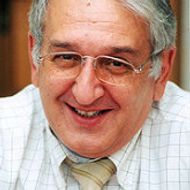- A
- A
- A
- ABC
- ABC
- ABC
- А
- А
- А
- А
- А
- HSE University
- Faculty of Economic Sciences
- Department of Mathematics
- News
- Shintaro Miura Spoke on 'Manipulated News Model: Electoral Competition and Mass Media'
-
The Department
109028, Moscow, Pokrovsky Boulevard 11, T423
Phone: +7 (495) 621 13 42,
+ 7(495) 772 95 90 *27200; *27212.
Email: dhm-econ@hse.ru; shatskaya@hse.ru

 New Centrality Measures in Networks: How to Take into Account the Parameters of the Nodes and Group Influence of Nodes to Nodes
New Centrality Measures in Networks: How to Take into Account the Parameters of the Nodes and Group Influence of Nodes to Nodes
Aleskerov F. T., Shvydun S., Meshcheryakova N.
CRC Press, 2022.
Belenky A., Fedin G., Kornhauser A.
International Journal of Public Administration. 2021. Vol. 44. No. 13. P. 1076-1089.
In bk.: AIP Conference Proceedings. Vol. 2328: ICMM-2020. AIP Publishing LLC, 2021. Ch. 060001. P. 060001-1-060001-4.
Zlotnik A., Kireeva O.
math. arXiv. Cornell University, 2020. No. arXiv:2011.14104v2[math.NA].
109028, Moscow, Pokrovsky Boulevard 11, T423
Phone: +7 (495) 621 13 42,
+ 7(495) 772 95 90 *27200; *27212.
Email: dhm-econ@hse.ru; shatskaya@hse.ru


Shintaro Miura Spoke on 'Manipulated News Model: Electoral Competition and Mass Media'
Abstract:
This paper concerns the distortions in electoral outcomes when mass media strategically distorts the interactions between candidates and voters. We develop an election model where a voter cannot directly observe the policies proposed by two office-motivated candidates. The voter learns this information through media reports before voting takes place, while the media outlet strategically conceals some part of this information. Because incorrect decision-making by the voter is unavoidable (direct distortion), the candidates have an incentive to inuence the media outlet's behavior through policy settings that are indirectly appealing to the voter (indirect distortion). As a result, policy convergence never occurs if and only if the outlet is sufficiently biased. We then measure the degree of distortion in the equilibrium outcomes by the voter's ex ante expected utility, and characterize the least and most distorted scenarios. This characterization shows that the distortion becomes severer as the outlet becomes more biased. By decomposing total distortion into its components, we also illustrate the tension arising between the direct and the indirect distortion.
- About
- About
- Key Figures & Facts
- Sustainability at HSE University
- Faculties & Departments
- International Partnerships
- Faculty & Staff
- HSE Buildings
- Public Enquiries
- Studies
- Admissions
- Programme Catalogue
- Undergraduate
- Graduate
- Exchange Programmes
- Summer Schools
- Semester in Moscow
- Business Internship
-
https://elearning.hse.ru/en/mooc/
Massive Open Online Courses
-
https://www.hse.ru/en/visual/
HSE Site for the Visually Impaired
-
http://5top100.com/
Russian Academic Excellence Project 5-100
- © HSE University 1993–2025 Contacts Copyright Privacy Policy Site Map
- Edit

